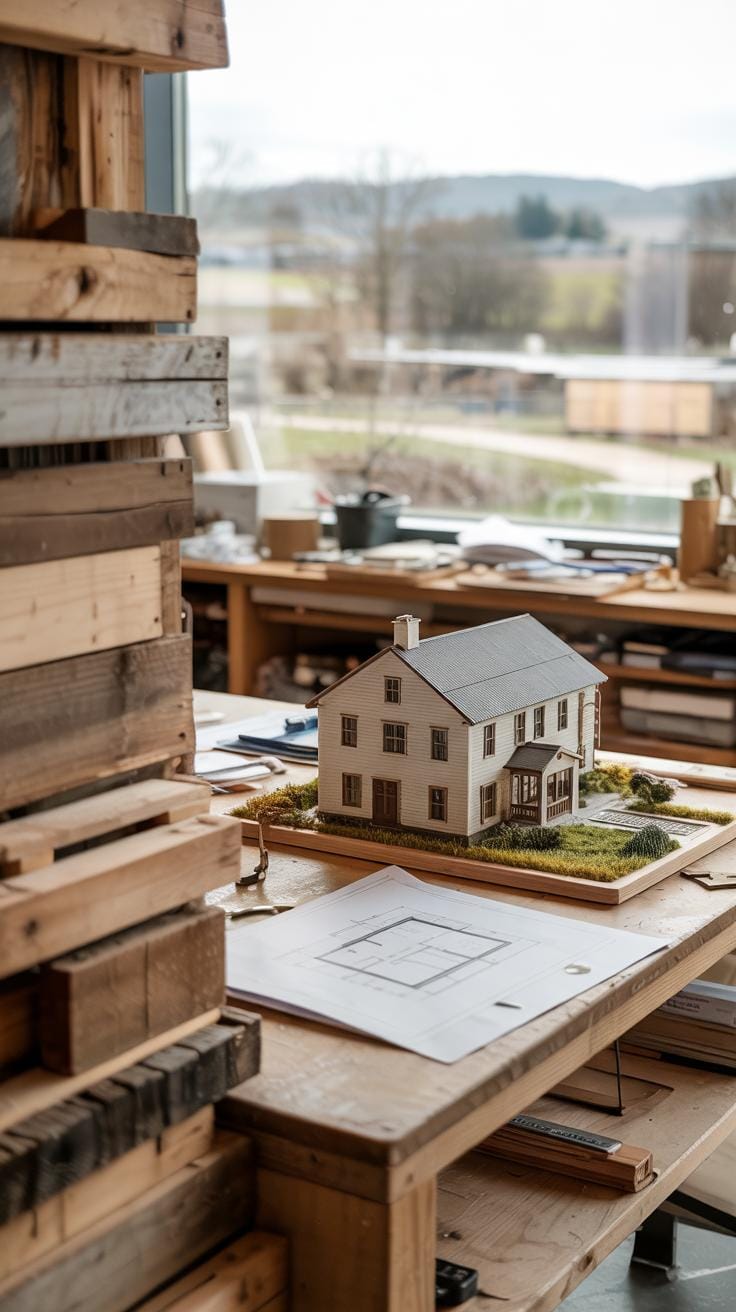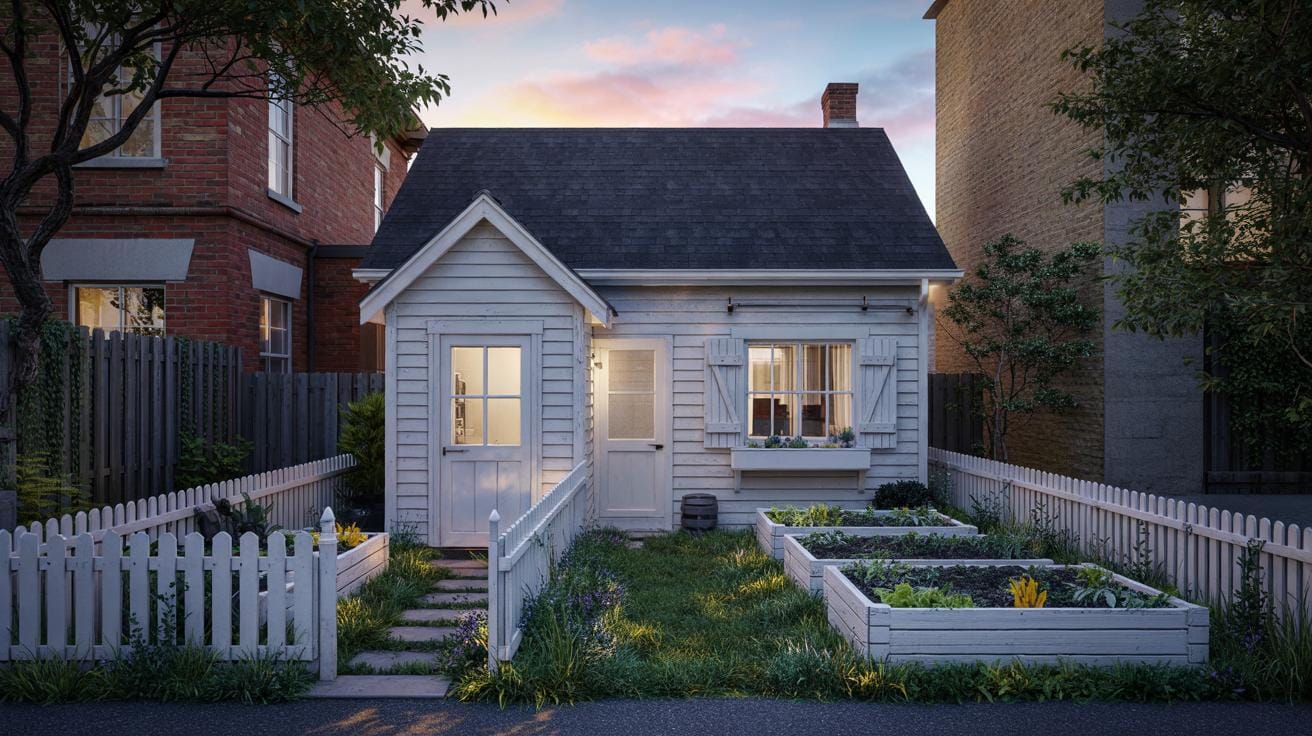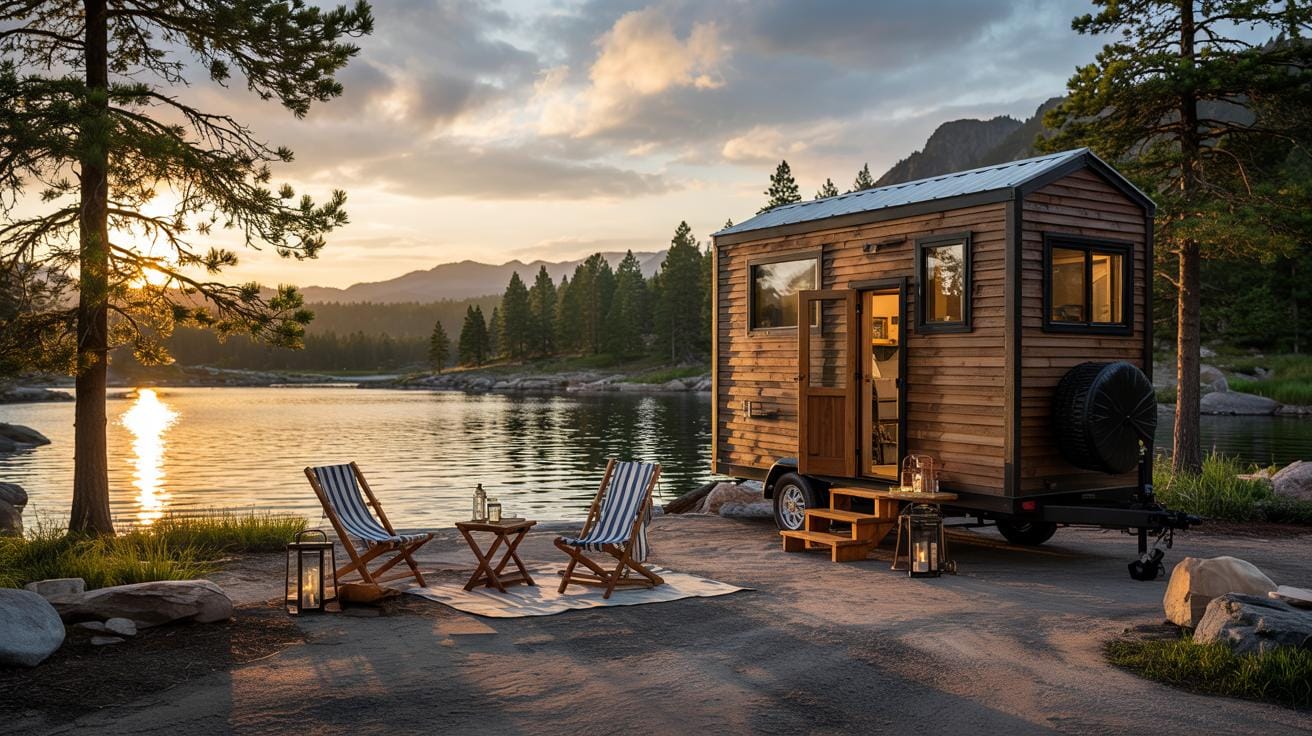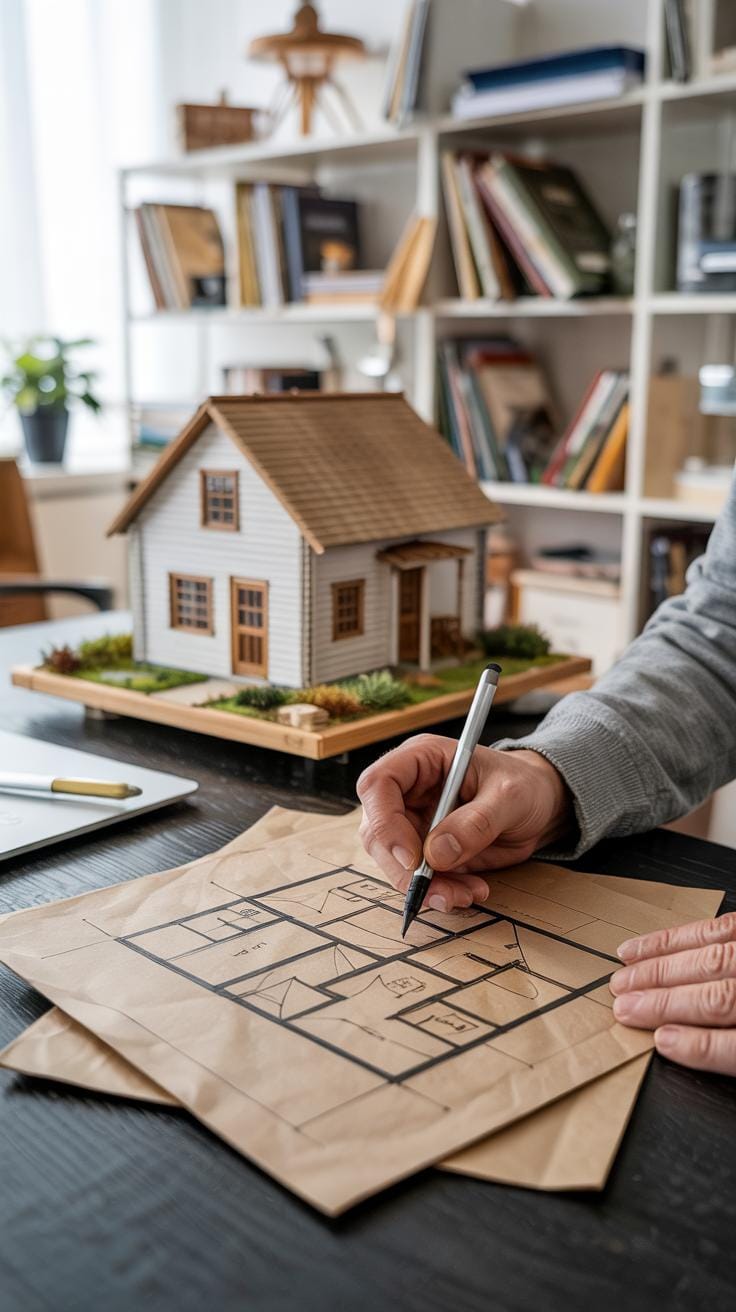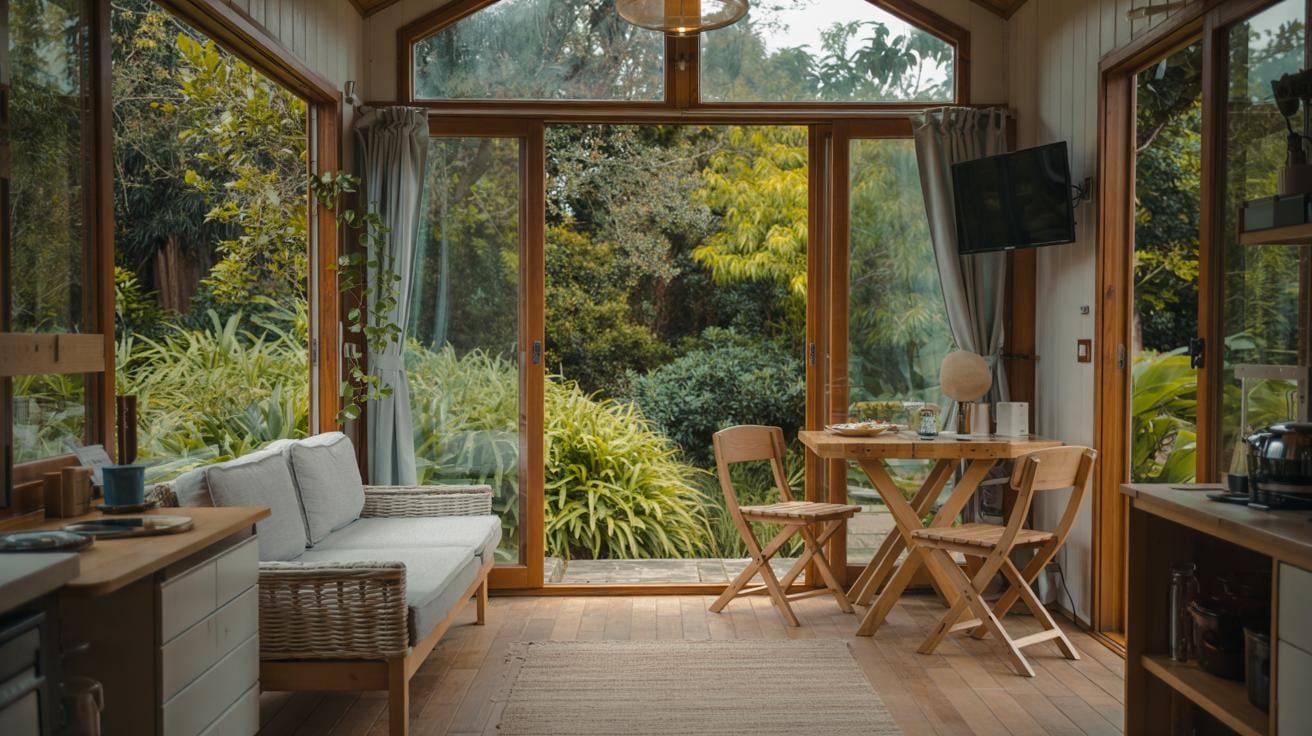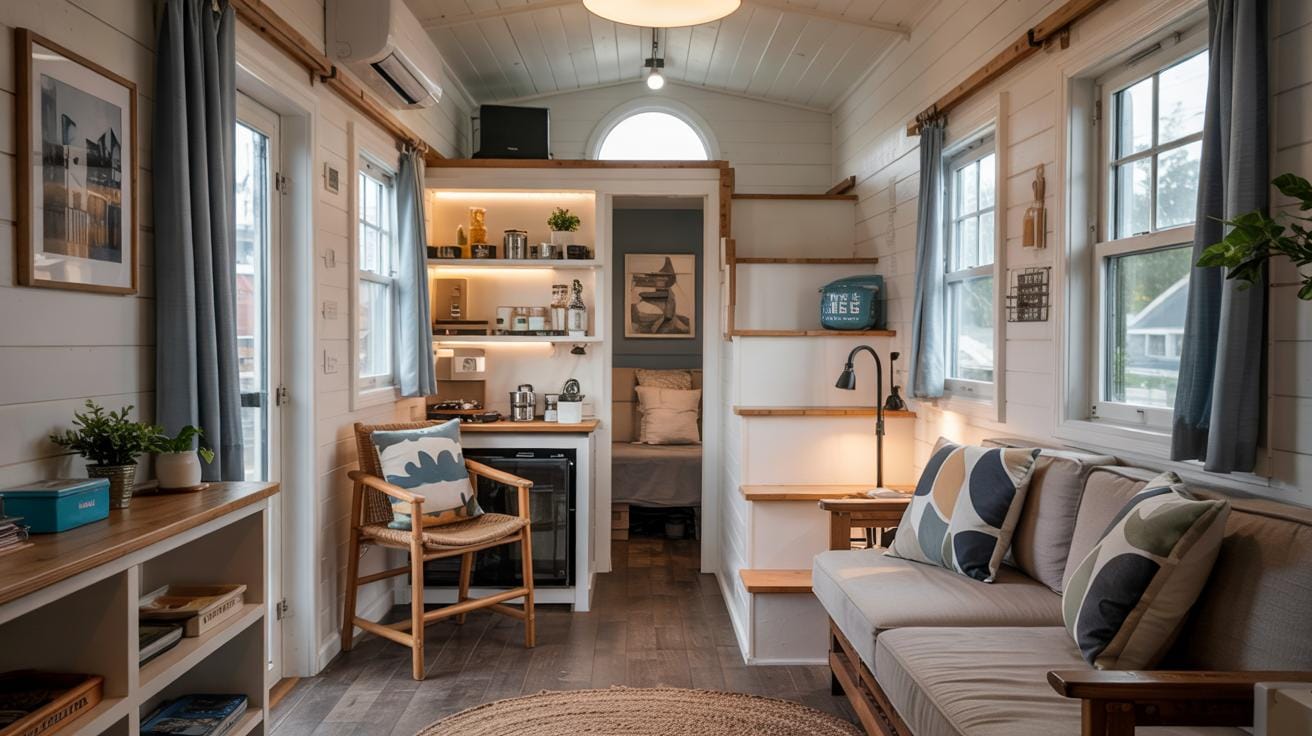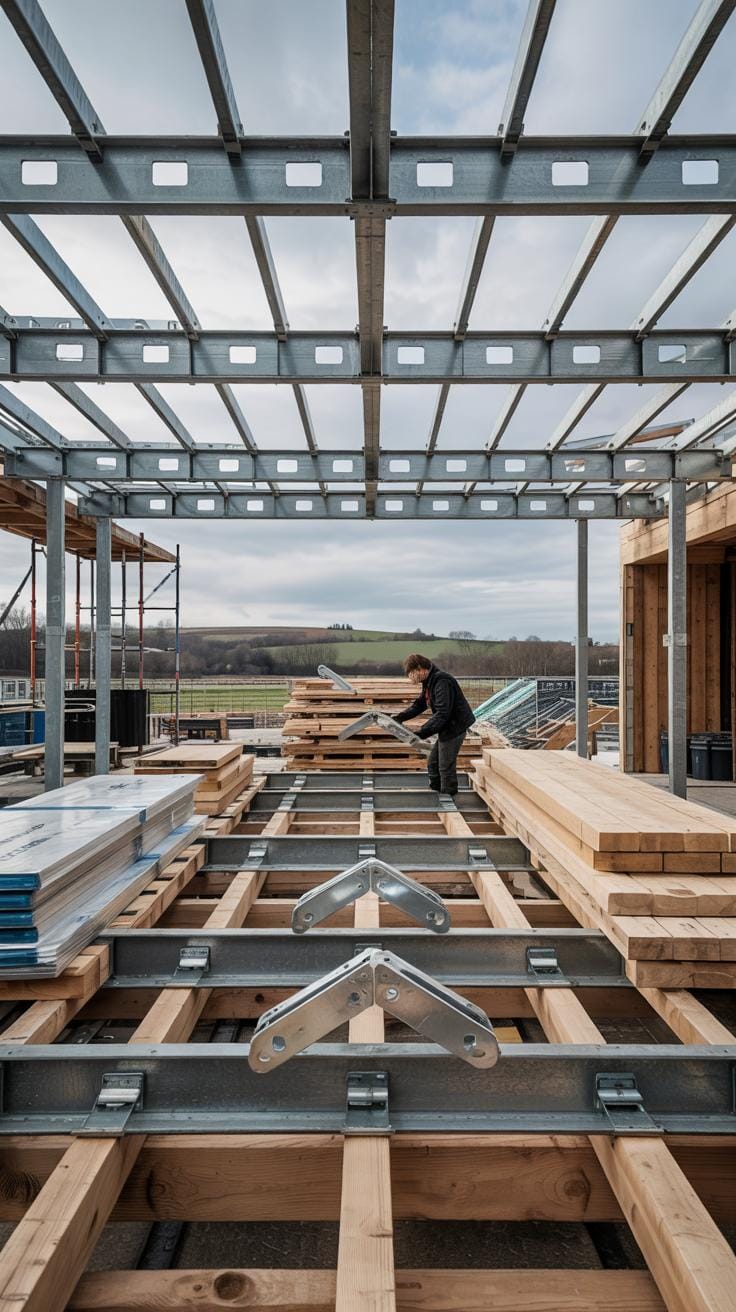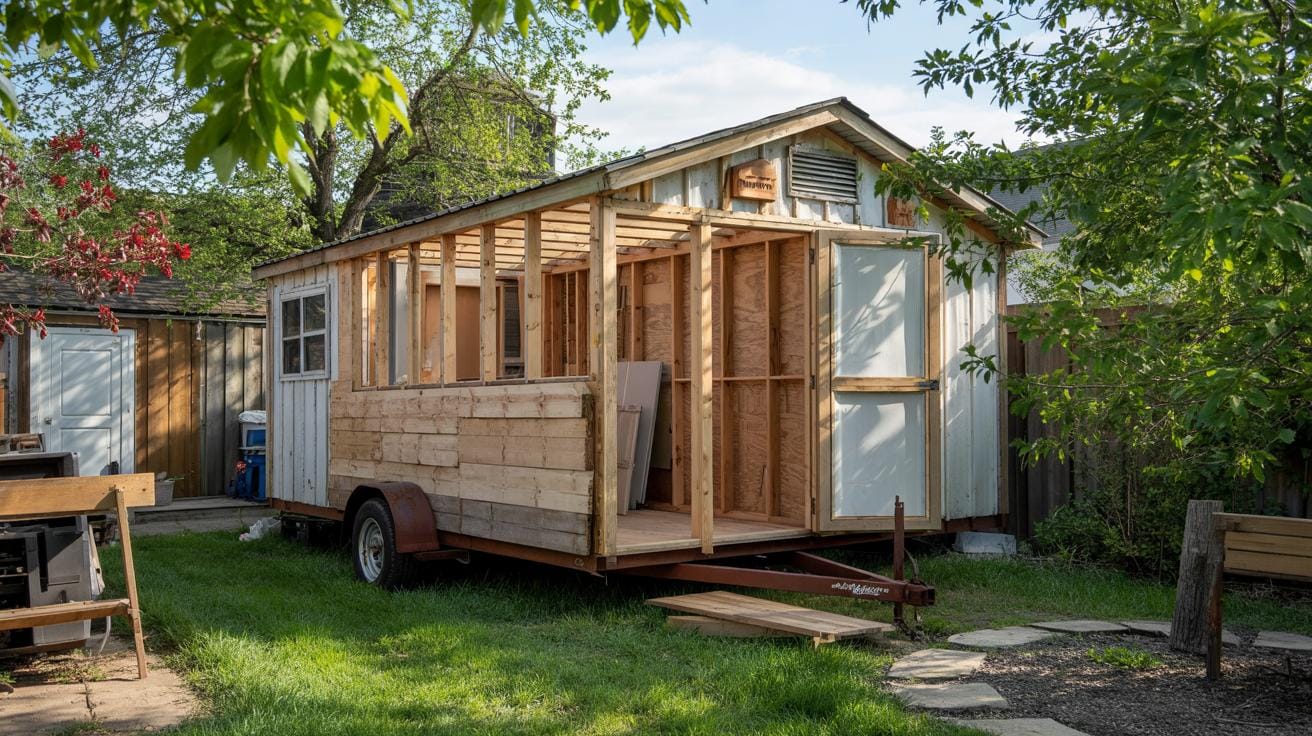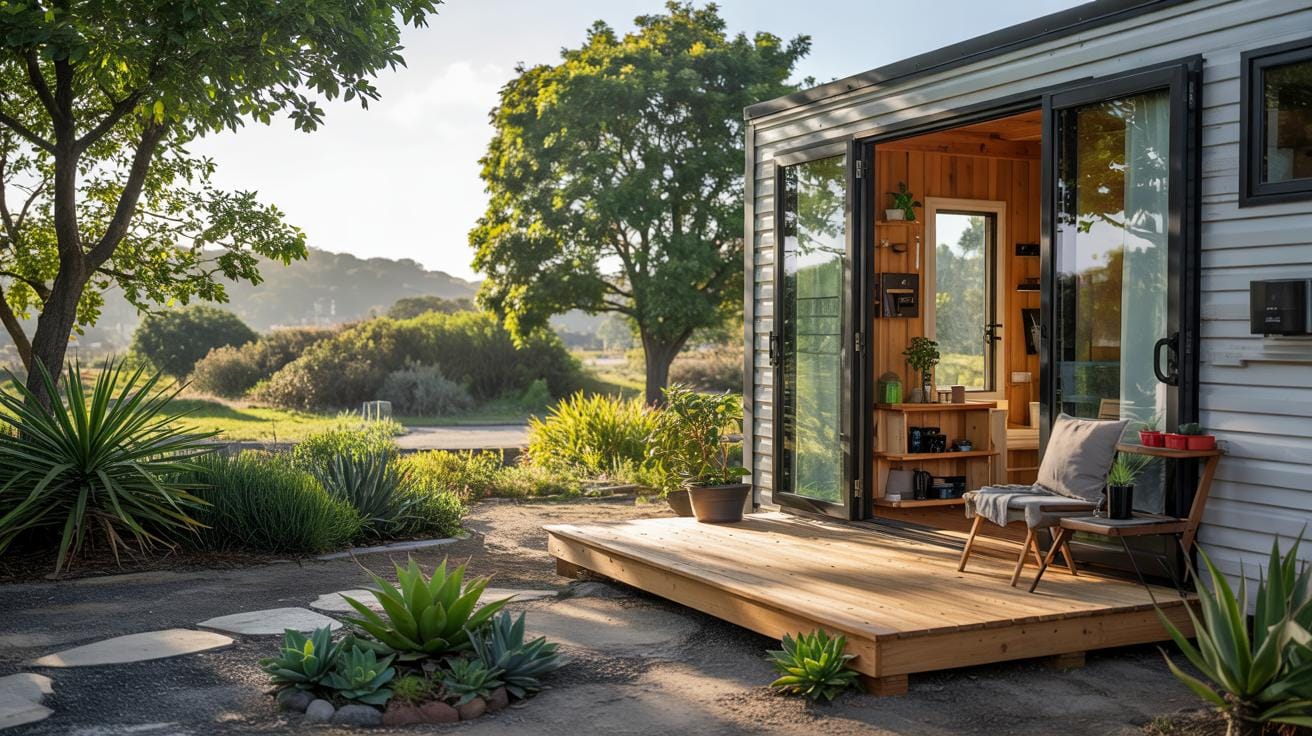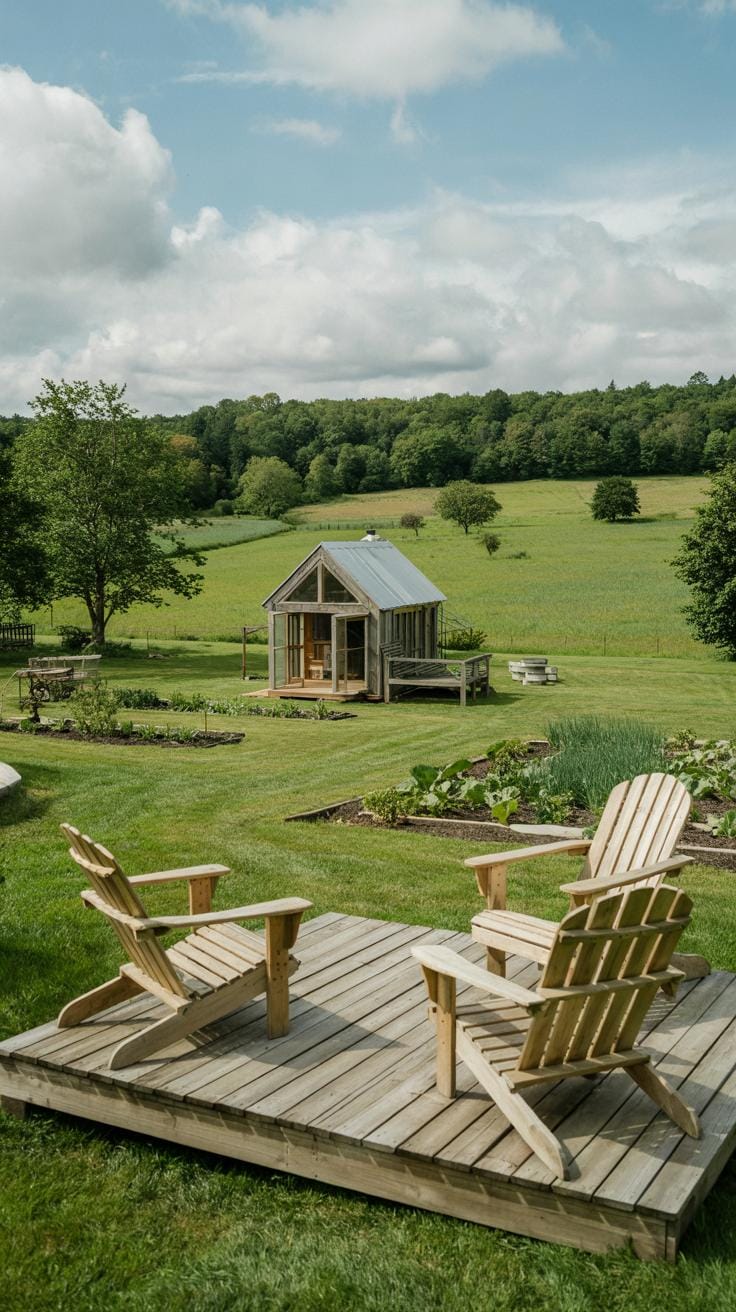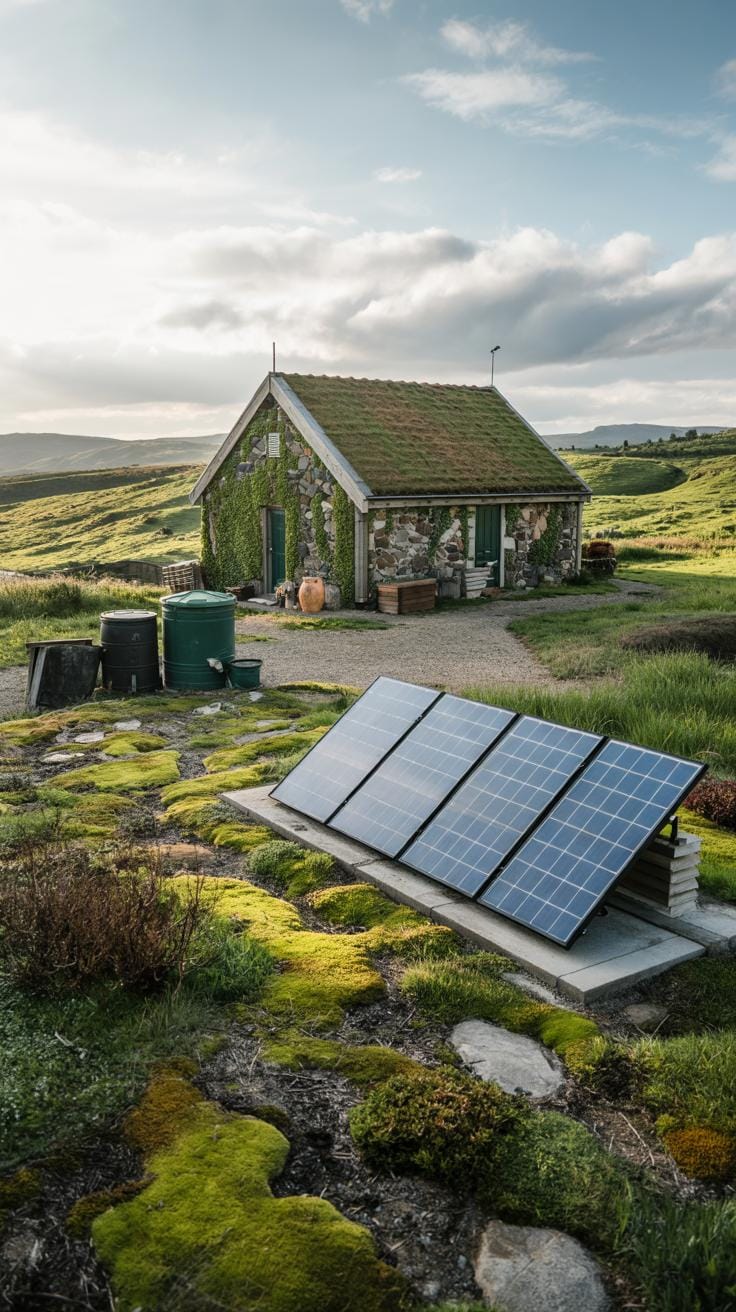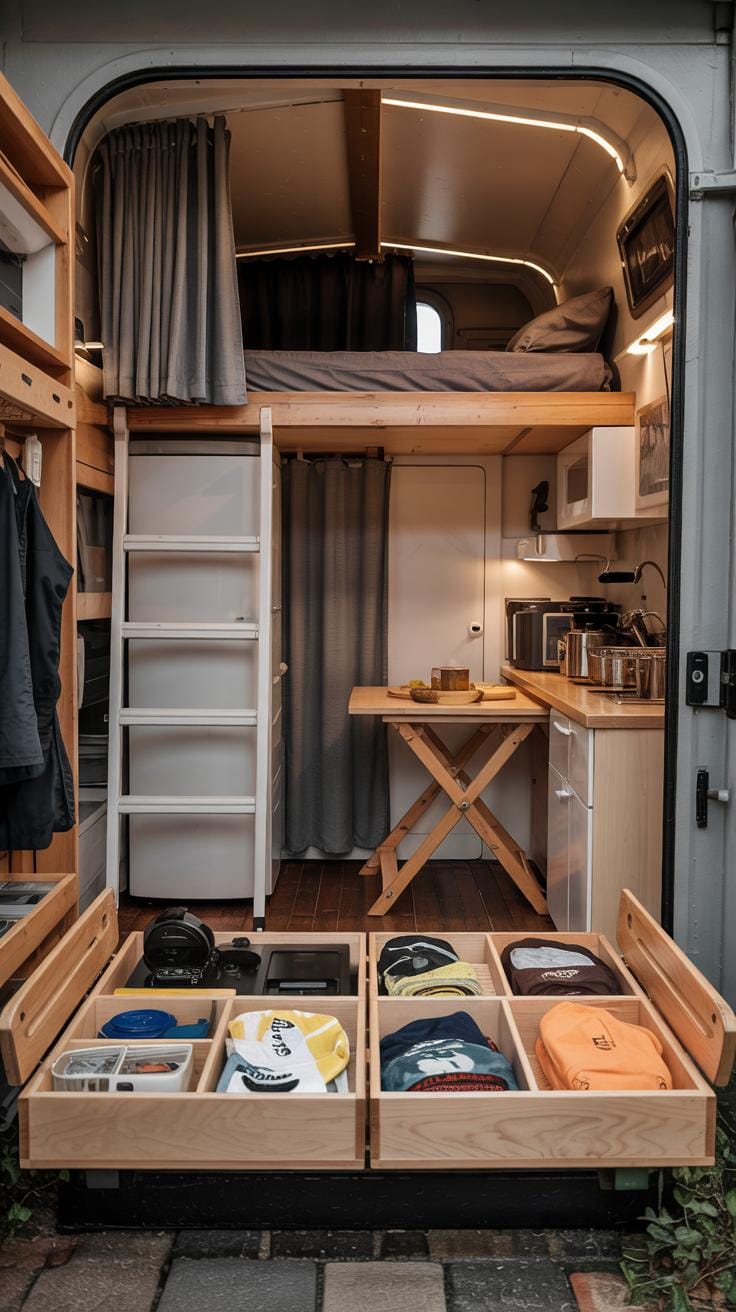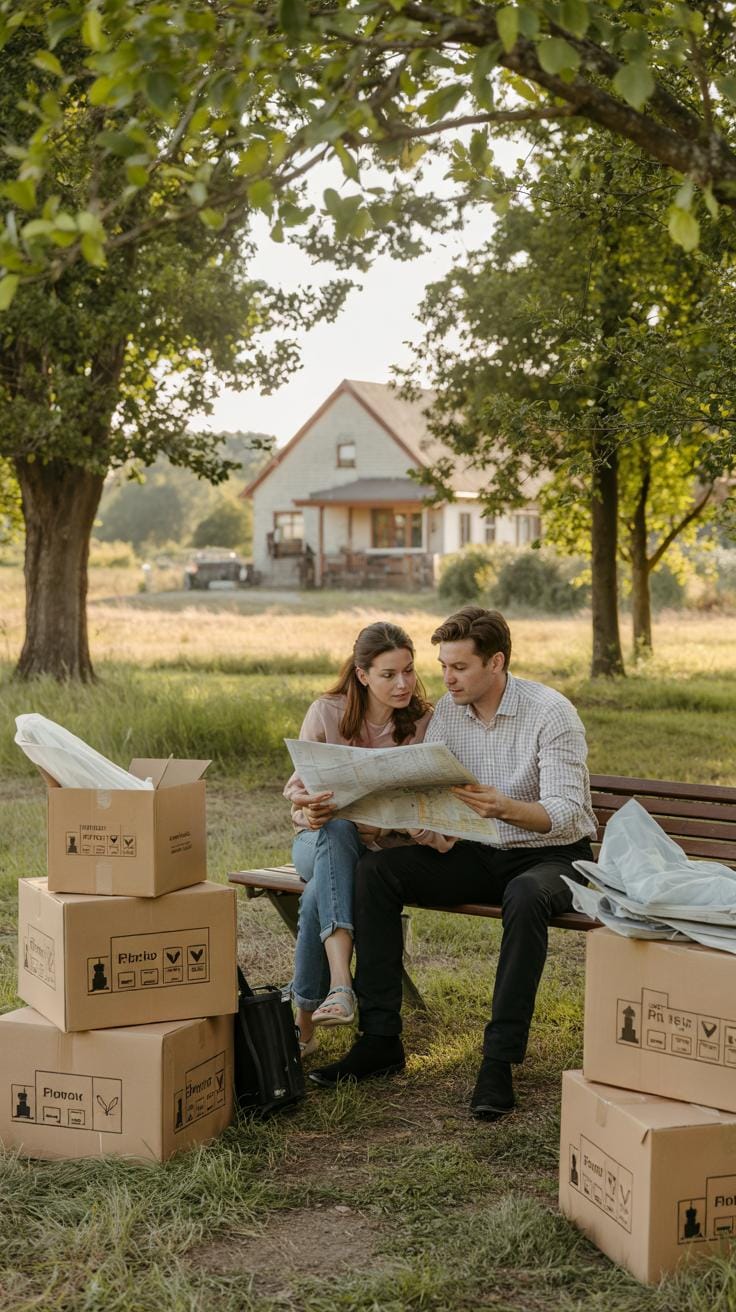Introduction
Tiny farmhouses have gained attention as an efficient way to enjoy countryside life with minimal environmental impact and lower costs. These homes offer a simple lifestyle with a connection to nature. You can find designs that make the most of minimal indoor space while blending well with rural landscapes.
Living in the countryside has unique benefits like fresh air, quiet surroundings, and close contact with nature. Tiny farmhouse designs complement this by reducing upkeep and utility expenses. This article guides you through practical aspects of tiny farmhouse living, design ideas, and tips for creating your ideal rural home. You will learn how to fit comfort, style, and functionality into a small but well-planned farmhouse.
Understanding Tiny Farmhouses
A tiny farmhouse is a small, simple home designed for rural living. Unlike typical houses, which often have multiple large rooms and sprawling layouts, tiny farmhouses focus on compact spaces that serve multiple purposes. These homes usually occupy less than 600 square feet but still deliver the functionality needed for countryside life.
The tiny home movement began gaining traction in the early 2000s as people sought affordable, sustainable housing. Over time, the appeal of tiny farmhouses grew, especially in rural areas, where the cost of land can be lower and a slower pace of life attracts individuals wanting to downsize. Today, many choose tiny farmhouses to simplify life and reduce expenses.
You might consider a tiny farmhouse if you want to cut building costs, reduce maintenance time, or live with less impact on the environment. They often use fewer materials and require less energy to heat or cool. Would your lifestyle benefit from smaller spaces that encourage thoughtful living?
Definition And Characteristics
Tiny farmhouses typically range between 200 and 600 square feet. They follow a basic, practical construction style, often using wood or natural materials to blend with the countryside. Their design emphasizes open floor plans to make small areas feel larger.
These homes usually include a living area, a compact kitchen, a small bathroom, and flexible sleeping spaces like lofts or foldable beds. Countryside use tends to prioritize simplicity and closeness to nature, so these homes often have porches or decks for outdoor enjoyment.
Unlike large farmhouses that support extensive farming operations, tiny farmhouses often suit small-scale gardening or hobby farming. Have you thought about how less space could fit your farming or gardening goals?
Benefits Of Tiny Farmhouse Living
Tiny farmhouses offer clear financial benefits. Building and running one costs less than maintaining a larger home. You save on utilities, taxes, and repairs. This can free up money to invest in your land or farm tools.
Environmentally, tiny farmhouses use fewer resources and create less waste. Many owners incorporate solar panels, composting toilets, or rainwater collection to lower their footprint. This approach fits well with rural living, where nature is part of daily life.
Life in a tiny farmhouse often leads to less clutter and a slower pace. Smaller spaces prompt you to prioritize what matters most. Do you find that living simply helps you focus on your work, family, or hobbies?
Designing Your Tiny Farmhouse For Functionality
Designing a tiny farmhouse demands a clear focus on practical use of space. Every square foot matters. Planning the layout with care helps you avoid clutter and frustration.
Consider the flow between rooms. Place the kitchen, dining, and living areas close together to save space and increase usability. Think about how you move during daily tasks and keep that in mind when deciding where to put doors, windows, and furniture.
Multifunctional furniture plays a vital role. A bench with storage inside or a fold-out table can save space without sacrificing comfort. Choose pieces that adapt to different needs, like a sofa that turns into a guest bed.
Natural light and ventilation improve your comfort and make the space feel larger. Position windows to catch breezes and sunlight. Good airflow reduces moisture and keeps air fresh inside. How will you place windows and vents to maximize this benefit?
Space Saving Layouts
Open floor plans work well in small farmhouses. Removing unnecessary walls creates a sense of freedom and makes the space feel bigger. Combining kitchen, dining, and living rooms into one area helps you see everything at once and reduces wasted space.
Lofts offer valuable extra space without expanding the house footprint. You can use them as sleeping areas, storage, or quiet spots to read. Make sure stairs or ladders leading up are safe and easy to use.
Built-in storage hides clutter in plain sight. Cabinets under stairs, shelves along walls, and window seats with hidden compartments keep your farmhouse tidy. How can you turn empty wall spaces into storage zones?
Using Natural Light
Windows are gateways to light and air. Position them on opposite walls when possible for cross ventilation. Skylights bring sunlight deep into the rooms that might not have side windows. Consider adding skylights over workspaces and bathrooms.
Walls painted in light colors reflect more light and brighten dark corners. White, cream, or soft pastels work well. Choose furniture and curtains in lighter hues to enhance this effect.
Think about how the sun moves across your farmhouse throughout the day. What times do you need natural light most? Arrange your rooms accordingly to make daily chores and relaxation more pleasant.
Materials And Construction Techniques
Choosing Durable Materials
Wood remains a popular choice for tiny farmhouse walls and floors. It offers natural insulation and fits well with rustic designs. Pine, cedar, and oak provide strength and a warm look. Stone can form a sturdy foundation or accent walls, giving your farmhouse extra durability against weather changes. Metal, such as corrugated steel for roofing, resists rust and requires little upkeep. Think about sustainably sourced materials too, like reclaimed wood or recycled metal. These options lower environmental impact and add character to your home. Could using old barn wood bring both history and strength to your tiny space? If you want charm and long-lasting quality, these materials create a solid base for your farmhouse’s interior and exterior.
Efficient Building Practices
Making your tiny farmhouse energy-efficient saves money and resources over time. Consider advanced framing techniques that use less lumber but maintain structure. This reduces waste and improves insulation space. Installing high-performance windows and proper air sealing stops drafts and cuts heating costs. Prefabricated panels speed construction and limit site mess. Think about where to place your home on the land to benefit from sunlight for passive heating. How could building with recycled or local materials reduce your carbon footprint? These practical steps help you create a comfortable farmhouse that respects the environment and lasts for years in rural settings.
Incorporating Rustic Charm With Modern Comfort
Your tiny farmhouse can feel warm and authentic while offering everyday convenience. Combining rustic charm with modern comfort means carefully choosing design features that honor traditional countryside style without sacrificing ease of living.
Exposed wooden beams create a strong visual appeal, reminding you of classic farm buildings. Paired with smooth wooden floors, these elements add texture and warmth. Farmhouse sinks bring practical function and a vintage look to your kitchen, making chores more enjoyable.
To keep your home comfortable year-round, integrate heating and plumbing systems that work quietly behind the scenes. Consider installing underfloor heating beneath wooden floors to keep your farmhouse cozy without bulky radiators.
Modern technology can blend in rather than stand out. Wireless thermostats, discreet kitchen appliances, and smart lighting offer convenience while preserving rustic style. When was the last time you balanced classic looks with modern needs in your own space?
Rustic Design Elements
Exposed beams support your roof and bring a rugged, country feel to your home. These wood features age well and add character to even the smallest rooms.
Wooden floors provide durability and heirloom charm. Choose wide planks or reclaimed wood to enhance authenticity and keep the design grounded.
Farmhouse sinks combine style with practical use. Large and deep, they handle heavy pots and make washing up simpler. Their distinct look anchors the kitchen’s rustic atmosphere.
Look for vintage hardware finishes on cabinets or light fixtures. These small touches highlight countryside living and build cohesion in your tiny farmhouse.
Modern Amenities
Heating is essential for comfort in rural settings. Installing radiant floor heating keeps rooms warm without conflicting with rustic design lines.
Use modern plumbing solutions to improve water efficiency without changing your farmhouse style. Low-profile pipes and fixtures can hide behind walls or under floors.
Technology should serve your lifestyle quietly. Wireless internet routers and smart controls can go unnoticed, helping you stay connected while maintaining a peaceful farmhouse ambiance.
Have you considered how a balance between old and new can improve your home’s comfort without losing its soul? Thoughtful selection and placement of modern features will help you live better in your tiny farmhouse.
Outdoor Spaces To Extend Living Area
Outdoor living areas add valuable space to tiny farmhouses. They give you room to relax, cook, and spend time with family outside your home’s walls. These spaces connect you with nature and make rural living more enjoyable. Consider a porch where you can watch the sunrise or a patio for evening meals under the stars. Think about how sunlight, wind, and privacy will affect your outdoor comfort.
Use weather-resistant furniture and simple layouts. A well-sized porch can act as an extra “room” during warmer months. Gardens and patios help you enjoy fresh air and add beauty without needing much upkeep. Have you thought about how outdoor spaces could transform your daily routine on the farm? Designing your outdoor areas with your lifestyle in mind will help you make the most of your tiny farmhouse.
Creating Useful Porches And Patios
Design porches and patios to protect against sun, rain, and wind. A covered porch shields you during sudden weather changes. Use sturdy materials like wood or stone for durability. Keep the space open enough for airflow but enclosed enough for shelter. Consider adding a ceiling fan or roll-down shades to increase comfort.
Think about the view and place seating with a clear sightline to your garden or field. A porch can serve as a transitional space between indoors and outdoors, making your home feel larger. Patio surfaces should be even and easy to clean. Adding a small built-in bench or storage can boost practicality. What activities will you do here? Let that guide your design choices to keep your outdoor space both useful and inviting.
Gardening And Landscaping
Small garden plots fit perfectly beside tiny farmhouses. Planting vegetables and herbs near your kitchen reduces trips to distant fields. Choose plants suited to your climate and soil for easier care. Flower beds add color and attract pollinators, supporting your garden’s health. Use natural landscaping with native plants to lower maintenance and blend with the countryside.
Raised beds, vertical planters, or containers can save space and improve soil quality. Mulch around plants reduces weeds and retains moisture. Consider grouping plants with similar needs together to simplify watering. How much time can you dedicate to gardening? Finding a balance between effort and reward will keep your garden thriving. Thoughtful landscaping not only enhances beauty, but also supports your sustainable lifestyle in the countryside.
Sustainable Practices For Countryside Tiny Farmhouses
You want your tiny farmhouse to respect the land it sits on. Using eco-friendly methods helps protect the environment and lowers your living costs. Local materials like reclaimed wood or stone reduce waste and support your area’s economy. Think about rainwater collection systems to catch rainfall for watering gardens or cleaning. This cuts down on relying solely on water from wells or municipal supplies, which can be limited in rural areas.
Solar panels provide clean energy and work well in open countryside spaces. Combining them with battery storage ensures power even during cloudy days or outages. Composting toilets reduce water use and turn waste into nutrient-rich material for your farm. Managing waste through recycling and composting keeps your tiny home tidy and cuts landfill contributions. Ask yourself which simple green practices fit your lifestyle and land best. Even small changes can make a big environmental difference.
Energy Efficiency
Solar power fits tiny farmhouses well. Solar panels on your roof or nearby land can supply most, if not all, of your electricity. Pair them with batteries to save energy for night or bad weather. Good insulation makes a huge difference. Dense wall and ceiling insulation keeps your home warm in winter and cool in summer, lowering heating and cooling needs.
Choose energy-saving appliances designed for small spaces, like compact refrigerators or LED lighting. These devices use less power but still offer full functionality. Energy-efficient choices reduce your utility bills and comfortable living. How much energy does your current setup waste? Small improvements can add up fast.
Water And Waste Management
Collecting rainwater in barrels or tanks provides water for irrigation or even household use after proper filtering. This practice cuts reliance on wells and helps during dry spells. Greywater systems reuse water from sinks or showers to irrigate plants or feed animals, minimizing water waste on your farm.
Composting toilets reduce water consumption significantly. They turn human waste into compost that supports soil health when managed correctly. On a tiny farm, greywater and composting systems lower your environmental footprint while keeping things efficient. Could capturing and reusing water change how your farmhouse functions daily? Sustainable water and waste habits turn a tiny space into a smart, self-sufficient home.
Challenges Of Tiny Farmhouse Living And How To Overcome Them
Living in a tiny farmhouse means facing some unique challenges. Limited space can make storage tricky. You need to keep only what’s necessary and find creative ways to store it. Isolation often comes with countryside living, which can feel lonely at times. Rural infrastructure like less reliable Internet or distant stores can add extra hurdles. You can manage these challenges by planning thoughtfully.
Ask yourself what items are essential and how to use every inch of your home wisely. Think about ways to stay socially active despite distance. Also, learn the local systems for services and deliveries. Managing these issues helps you enjoy the quiet and charm of rural life without inconvenience or stress.
Storage Solutions
Smart storage maximizes your tiny farmhouse space. Use vertical shelving on walls to free up floor area. Install shelves above doors or high corners for items you don’t use daily. Hidden compartments beneath benches or stairs create extra room without cluttering the sightlines.
Multipurpose furniture with built-in storage is another option. Beds with drawers underneath or tables that open up can hold tools, linens, or pantry items. Regularly review your belongings and donate or sell what you no longer need. How can you redesign your existing space to add storage without feeling crowded?
Community And Connectivity
Building ties with neighbors boosts your experience despite remote living. Start with small gestures like sharing garden produce or inviting someone over for coffee. Local events, markets, or church gatherings can help you meet others nearby. These relationships provide support and lessen feelings of isolation.
Technology also plays a vital role. Reliable Internet connection lets you work, learn, and socialize online. Video calls and social media keep you connected to friends and family far away. Setting up a backup communication plan, like a mobile hotspot, helps during outages. What local groups or online communities can you join to strengthen your network?
Planning Your Move To A Tiny Countryside Farmhouse
Choosing The Right Location
Start by listing what you want near your tiny farmhouse. How close should stores, schools, and medical centers be? Think about travel time and road conditions, especially in bad weather.
Check the quality of the land. Is the soil healthy if you plan to garden or keep animals? Is the area prone to flooding or harsh winds? These affect comfort and safety.
Contact local authorities to learn about zoning rules. Some places restrict building styles, property sizes, or even the number of structures allowed. Make sure your tiny farmhouse plan fits these rules.
Consider future needs. Will the location stay convenient if your lifestyle changes? Ask yourself if noise, neighbors, or local developments might affect your peace.
Preparation And Setup
Clear the site carefully. Remove rocks, debris, and overgrown plants to create a stable base. Level the ground to avoid drainage problems around your farmhouse.
Plan how you will bring in water, electricity, and internet. Confirm utility access before construction starts. Solar panels or wells are alternatives if utilities are far away.
Choose furniture that fits the space and serves multiple uses. A sofa that turns into a bed or tables with storage underneath help save room.
Create zones for cooking, sleeping, and relaxing. Keep walkways clear to avoid clutter. Think about where to place shelves, hooks, and baskets to maximize space.
Conclusions
Tiny farmhouses provide a smart and appealing housing option for countryside living. They offer comfort through clever design without excess space or cost. With the right materials and layout, you can build a small home that meets daily needs and reflects your taste. You can appreciate rural life fully while owning a manageable property.
Countryside living paired with tiny farmhouse designs invites you to simplify and enjoy a slower pace. Applying practical design choices can solve common space challenges. Paying attention to details like light, ventilation, and storage will help you create a peaceful and useful home. Your tiny farmhouse can be a perfect base for a fulfilling rural lifestyle.


